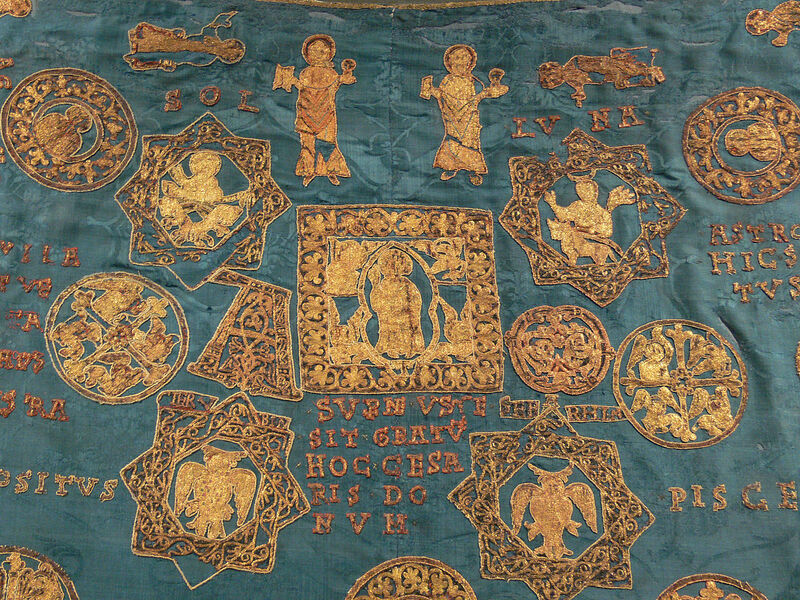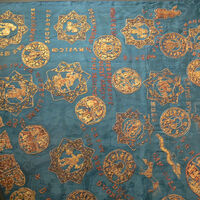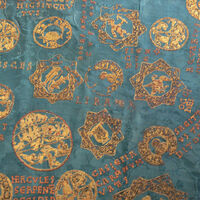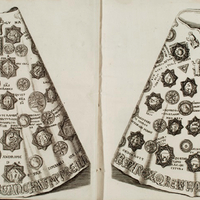Star Mantle of Henry II
Date:
1020
Location or Findspot (Modern-Day Country):
Germany
Medium:
Silk,
Silver or gold thread
Dimensions:
now 154 × 300 cm
Description:
The "Star Mantle" associated with Henry II (973–1024), king of Germany and Italy and Roman Emperor from 1014, was a gift to him in about 1020. Latin inscriptions on the garment name the recipient ("O ornament of Europe, Emperor Henry") and the donor, a South Italian aristocrat named Ismahel. Ismahel lived in the Byzantines' Italian capital, Bari, where he led several rebellions against them; when the last one was defeated, he moved north to gain support for his revolt. The mantle was probably intended to elicit imperial aid, and Ismahel was given the title of Duke of Apulia, but he died in Bamberg (Germany) in 1020.
The gold-thread embroidery depicts heavenly images: personifications of the constellations, zodiac signs, the Sun and Moon, and circles that represent the northern and southern hemispheres, many framed in eight-pointed stars. The Christian heaven is present in the form of saints and images of Mary and Jesus, including a Maiestas Domini between evangelist symbols. A caption reads, "Description of the Whole World."
The mantle was almost certainly made in Germany; Henry or his wife, Cunegunde, donated it to Bamberg Cathedral, as stated in a third inscription. They were both canonized in the twelfth century, and the mantle became a relic. In the fifteenth century the garment's embroidered figures and texts were removed from their purple silk ground and rearranged on a patterned blue silk ground. The garment has also been cut down into the form of a liturgical cope.
The gold-thread embroidery depicts heavenly images: personifications of the constellations, zodiac signs, the Sun and Moon, and circles that represent the northern and southern hemispheres, many framed in eight-pointed stars. The Christian heaven is present in the form of saints and images of Mary and Jesus, including a Maiestas Domini between evangelist symbols. A caption reads, "Description of the Whole World."
The mantle was almost certainly made in Germany; Henry or his wife, Cunegunde, donated it to Bamberg Cathedral, as stated in a third inscription. They were both canonized in the twelfth century, and the mantle became a relic. In the fifteenth century the garment's embroidered figures and texts were removed from their purple silk ground and rearranged on a patterned blue silk ground. The garment has also been cut down into the form of a liturgical cope.
Relevant Textbook Chapter(s):
6
Image Credits:
Wikimedia Commons







